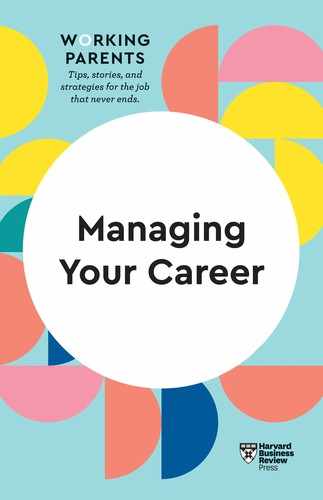Chapter 5
1. Sulin Ba and Lei Wang, “Digital Health Communities: The Effect of Their Motivation Mechanisms,” Decision Support Systems 55, no. 4 (2013): 941–947.
2. Emma E. A. Cohen et al., “Rowers’ High: Behavioural Synchrony Is Correlated with Elevated Pain Thresholds,” Biology Letters 6, no. 1 (2009).
3. Leo Babauta, “Review Your Goals Weekly,” Zen Habits, n.d., https://zenhabits.net/review-your-goals-weekly/; Gina Trapani, “How to Write To-Do Lists That Work,” Harvard Business Review, January 13, 2009.
4. Noah J. Goldstein, Steve J. Martin, and Robert B. Cialdini, Yes! 50 Scientifically Proven Ways to Be Persuasive (New York: Free Press, 2008).
Chapter 6
1. Bureau of Labor Statistics, “Employment Characteristics of Families Summary,” April 21, 2020, https://www.bls.gov/news.release/famee.nr0.htm.
2. Joan C. Williams, Mary Blair-Loy, and Jennifer M. Berdahl, “Cultural Schemas, Social Class, and the Flexibility Stigma,” Journal of Social Issues 69, no. 2 (2013): 209–234.
3. Heejung Chung and Tanja van der Lipee, “Flexible Working, Work-Life Balance, and Gender Equality: Introduction,” Social Indicators Research, November 28, 2018, https://link.springer.com/article/10.1007/s11205-018-2025-x; Williams et al., “Cultural Schemas, Social Class, and the Flexibility Stigma,” 210; Sylvia A. Hewlett and C. B. Luce, “Off-Ramps and On-Ramps: Keeping Talented Women on the Road to Success,” Harvard Business Review, March 2005.
4. P. Stone, “Opting Out: Challenging Stereotypes and Creating Real Options for Women in the Professions,” Harvard Business School Research Symposium, 2013, http://www.hbs.edu/faculty/conferences/2013-w50-research-symposium/Documents/stone.pdf.
5. Williams et al., “Cultural Schemas, Social Class, and the Flexibility Stigma,” 210.
6. D. Burkus, “Everyone Likes Flex Time, but We Punish Women Who Use It,” Harvard Business Review, February 20, 2017; Williams et al., “Cultural Schemas, Social Class, and the Flexibility Stigma,” 224.
7. Chung and van der Lippe, “Flexible Working, Work-Life Balance, and Gender Equality.”
8. M. Benton, “Executive Women: Creating a Good Life in a World of Social Saturation” (unpublished doctoral thesis, University of Twente, Enschede, The Netherlands, 2017), 33–34.
Chapter 9
1. Mojca Filipič Sterle et al., “Expatriate Family Adjustment: An Overview of Empirical Evidence on Challenges and Resources,” Frontiers in Psychology 9 (2018): 1207.
Chapter 11
1. Susan Harkness, Magda Borkowska, and Alina Pelikh, “Employment Pathways and Occupational Change After Childbirth,” Government Equalities Office, October 2019, https://assets.publishing.service.gov.uk/government/uploads/system/uploads/attachment_data/file/840062/Bristol_Final_Report_1610.pdf.
2. Claudia Goldin, “A Grand Gender Convergence: Its Last Chapter,” American Economic Review 104, no. 4 (2014): 1091–1119.
1. “Uncovering Talent—A New Model of Inclusion,” Deloitte, 2013, https://www2.deloitte.com/content/dam/Deloitte/us/Documents/about-deloitte/us-about-deloitte-uncovering-talent-a-new-model-of-inclusion.pdf.
2. Dan Aloi, “Mothers Face Disadvantages in Getting Hired, Cornell Study Says,” Cornell Chronicle, August 4, 2005, https://news.cornell.edu/stories/2005/08/mothers-face-disadvantages-getting-hired-study-shows.
Chapter 13
1. “Raising Kids and Running a Household: How Working Parents Share the Load,” Pew Research Center, November 4, 2015, https://www.pewsocialtrends.org/2015/11/04/raising-kids-and-running-a-household-how-working-parents-share-the-load/.
2. I studied 113 dual-career couples ranging in age from 26 to 63, with an even distribution among age groups. The majority of couples—76—were in their first significant partnership. Participants in the study came from 32 countries on four continents, and their ethnic and religious backgrounds reflected this diversity. At the time of the study, roughly 35% resided in North America, 40% in Europe, and 25% in the rest of the world. In 68 of the couples at least one partner had children. Eleven of the couples identified as gay, and the rest as straight. Just under 60% of the participants were pursuing careers in the corporate world. The others were spread roughly equally among the professions (such as medicine, law, and academia), entrepreneurship, government, and the nonprofit sector.
Chapter 14
1. “The Rise of the Dual-Earner Family with Children,” Daily, May 30, 2016, https://www150.statcan.gc.ca/n1/pub/11–630-x/11–630-x2016005-eng.htm.
1. Family Caregiver Alliance and reviewed by Margaret Neal, PhD, “Work and Eldercare,” October 2012, https://www.caregiver.org/work-and-eldercare.
Chapter 17
1. Priscilla Claman, “Forget Mentors: Employ a Personal Board of Directors,” hbr.org, October 20, 2010, https://hbr.org/2010/10/forget-mentors-employ-a-person.
Chapter 18
1. Ronald S. Burt and Don Ronchi, “Teaching Executives to See Social Capital: Results from a Field Experiment,” Social Science Research 36, no. 3 (September 2007): 1156–1183.
Chapter 19
1. Christopher Ingraham, “Under 50? You Still Haven’t Hit Rock Bottom, Happiness-wise,” Washington Post, August 24, 2017.
2. Paula Span, “Many Americans Try Retirement, Then Change Their Minds,” New York Times, March 30, 2018.
